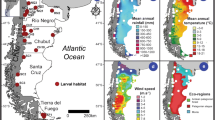Summary
In southeastern North America (North Florida, USA), the duration, frequency, and timing of drought differentially affect the survivorship of pre-adult tree-hole mosquitoes. Drought affects survivorship both by the direct action of dehydration on developing larvae and pupae and by the indirect modulation of predation. The drought-susceptible species, Toxorhynchites rutilus, Orthopodomyia signifera, and Anopheles barberi co-occur in more permanent holes that are larger, with larger, more vertical openings, lower down in larger trees, and contain darker water with higher conductivity, pH, and tannin-lignin content than the holes occupied by Aedes triseriatus that has drought-resistant eggs and rapid larval development. Ovipositing mosquitoes cue on physical and chemical attributes of tree holes independently of host tree species. These same attributes differ among drought-prone and drought-resistant holes but mosquitoes track these attributes more faithfully than the attributes predict tree-hole stability.
Similar content being viewed by others
References
Bentley MD, McDaniel IN, Lee HP, Stiehl B, Yatagai M (1976) Studies of Aedes triseriatus oviposition attractants produced by larvae of Aedes triseriatus and Aedes atropalpus (Diptera: Culicidae). J Med Entomol 13:112–115
Bentley M, McDaniel IN, Yatagai M, Lee HP, Maynard R (1979) p-cresol: An oviposition attractant of Aedes triseriatus. Environ Entomol 8:201–209
Bentley MD, McDaniel IN, Yatagai M, Lee HP, Maynard R (1981) Oviposition attractants and stimulants of Aedes triseriatus (Say) (Diptera: Culicidae). Environ Entomol 10:186–189
Bradshaw WE, Holzapfel CM (1983) Predator-mediated, non-equilibrium coexistence of tree-hole mosquitoes in southeastern North America. Oecologia (Berlin) 57:239–256
Bradshaw WE, Holzapfel CM (1984) Seasonal development of tree-hole mosquitoes (Diptera: Culicidae) and Chaoborids in relation to weather and predation. J Med Entomol 21:366–378
Bradshaw WE, Holzapfel CM (1986) Habitat segregation among European tree-hole mosquitoes. Nat Geogr Res 2:167–178
Carpenter S (1982) Stemflow chemistry: Effects on population dynamics of detritivorous mosquitoes in tree-hole ecosystems. Oecologia (Berlin) 53:1–6
Carpenter S (1983) Resource limitation of larval tree-hole mosquitoes subsisting on beech detritus. Ecology 64:219–223
Chambers RC (1985) Competition and predation among larvae of three species of tree hole breeding mosquitoes. In: Lounibos LP, Rey JR, Frank JH (eds) Ecology of mosquitoes: Proceedings of a workshop. Vero Beach: Florida Medical Entomology Laboratory, pp 25–53
Connell JH (1983) On the prevalence and relative importance of interspecific competition: evidence from field experiments. Amer Nat 122:661–696
Dodson SI (1970) Complementary feeding niches sustained by sizeselective predation. Lim Oceanogr 15:131–137
Fish D, Carpenter SR (1982) Leaf litter and larval mosquito dynamics in tree-hole ecosystems. Ecology 63:283–288
Hall DJ, Cooper WE, Werner EE (1970) An experimental approach to the production dynamics and structure of freshwater animal communities. Lim Oceanogr 15:829–828
Hawley WA (1985a) Population dynamics of Aedes sierrensis. In: Lounibos LP, Rey JR, Frank JH (eds) Ecology of mosquitoes: Proceedings of a workshop. Vero Beach: Florida Medical Entomology Laboratory, pp 167–184
Hawley WA (1985b) Size variation in a mosquito: Implications for population dynamics and disease transmission. J Anim Ecol 54:955–964
Livdahl TP (1982) Competition within and between hatching cohorts of a tree-hole mosquito. Ecology 63:1751–1760
Lounibos LP (1983) The mosquito community of treeholes in subtropical Florida. In: Frank JH, Lounibos LP (eds) Phytotelmata: Terrestrial plants as hosts of aquatic insect communities. Medford, NJ: Plexus Publishing 1983, pp 223–246
Lounibos LP (1985) Interactions influencing production of treehole mosquitoes in south Florida. In: Lounibos LP, Rey JR, Frank JH (eds) Ecology of mosquitoes: Proceedings of a workshop. Vero Beach: Florida Medical Entomology Laboratory, pp 65–77
Lunt SR, Peters GE (1976) Distribution and ecology of tree-hole mosquitoes along the Missouri and Platte Rivers in Iowa, Nebraska, Colorado, and Wyoming. Mosq News 36:80–84
McDaniel IN, Bentley MD, Lee HP, Yatagai M (1976) Effects of color and larval-produced oviposition attractants on oviposition of Aedes triseriatus. Environ Entomol 5:553–556
McDaniel IN, Bentley MD, Lee HP, Yatagai M (1979) Studies of Aedes triseriatus (Diptera: Culicidae) oviposition attractants. Evidence for attractant production by kaolin-treated larvae. Can Entomol 11:143–147
McLachlan AJ, Cantrell MA (1980) Survival strategies in tropical rain pools. Oecologia (Berlin) 47:344–351
Mitchell L, Rockett CL (1981) An investigation on the larval habitat of five species of tree-hole breeding mosquitoes (Diptera: Culicidae). Great Lakes Entomol 14:123–129
Peterson JJ, Chapman HC (1969) Chemical factors of water in tree holes and related breeding of mosquitoes. Mosq News 29:29–36
Schoener TW (1983) Field experiments on interspecific competition. Am Nat 122:240–285
Slaff ME, Reilly JJ, Crans WJ (1975) Colonization of the predacious mosquito, Toxorhynchites rutilus septentrionalis (Dyar & Knab). Pro New Jersey Mosq Exterm Assoc 62:146–148
Sokal RR, Rohlf FJ (1969) Biometry. San Francisco: W.H. Freeman
Sprules G (1972) Effects of size-selective predation and food competition on high altitude zooplankton communities. Ecology 53:375–386
Trimble RM (1979) Laboratory observations on oviposition by the predaceous tree-hole mosquito, Toxorhynchites rutilus septentrionalis. Can Zool 57:1104–1108
Wilbur HM (1984) Complex life cycles and community organization in amphibians. In: Price PW, Slobodchikoff CN, Gaud WS (eds) A New Ecology. New York, John Wiley & Sons, pp 195–224
Wilton DP (1968) Oviposition site selection by the tree-hole mosquito, Aedes triseriatus (Say). J Med Entomol 5:189–194
Zaim M, Newson HD (1979) Larval development and oviposition behavior of Aedes triseriatus (Diptera: Culicidae) as affected by varying concentrations of sodium chloride and calcium nitrate in the water. Environ Entomol 8:326–329
Author information
Authors and Affiliations
Rights and permissions
About this article
Cite this article
Bradshaw, W.E., Holzapfel, C.M. Drought and the organization of tree-hole mosquito communities. Oecologia 74, 507–514 (1988). https://doi.org/10.1007/BF00380047
Received:
Issue Date:
DOI: https://doi.org/10.1007/BF00380047




